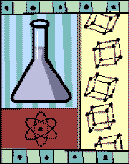The Cerebral Palsy Network
- Cephalic Disorders
- Anencephaly
- Cebocephaly
- Colpocephaly
- Ethmocephaly
- Holoprosencephaly
- Hydranencephaly
- Iniencephaly
- Lissencephaly
- Magalencephaly
- Microcephaly
- Porencephaly
- Schizencephaly
- Rare Cephalies
- More Information
- Research
- About CPN
Around CPN
Resource
Center
Neurological Diseases and Disorders
Cephalic Disorders
What Are Cephalic Disorders?
A few of our pages for Cephalic disorders are not working correctly we apologize for the inconvienance. We are working to correct them.
Cephalic disorders are
congenital conditions that stem from damage to, or abnormal development
of, the budding nervous system. Cephalic is a term that means
"head" or "head end of the body." Congenital means the
disorder is present at, and usually before, birth. Although there are many
congenital developmental disorders, this fact sheet briefly describes only
cephalic conditions.
Cephalic disorders are not necessarily caused by a single factor, but may be influenced by hereditary or genetic conditions, or by environmental exposures during pregnancy such as medication taken by the mother, maternal infection, or exposure to radiation. Some cephalic disorders occur when the cranial sutures (the fibrous joints that connect the bones of the skull) join prematurely. Most cephalic disorders are caused by a disturbance that occurs very early in the development of the fetal nervous system.
The human nervous system develops from a small, specialized plate of cells on the surface of the embryo. Early in development, this plate of cells forms the neural tube, a narrow sheath that closes between the third and fourth weeks of pregnancy to form the brain and spinal cord of the embryo. Four main processes are responsible for the development of the nervous system: cell proliferation, the process in which nerve cells divide to form new generations of cells; cell migration, the process in which nerve cells move from their place of origin to the place where they will remain for life; cell differentiation, the process during which cells acquire individual characteristics; and cell death, a natural process in which cells die. Understanding the normal development of the human nervous system, one of the research priorities of the National Institute of Neurological Disorders and Stroke, may lead to a better understanding of cephalic disorders.
Damage to the developing nervous system is a major cause of chronic, disabling disorders and, sometimes, death in infants, children, and even adults. The degree to which damage to the developing nervous system harms the mind and body varies enormously. Many disabilities are mild enough to allow those afflicted to eventually function independently in society. Others are not. Some infants, children, and adults die, others remain totally disabled, and an even larger population is partially disabled, functioning well below normal capacity throughout life.
This
information was Prepared by
Office of Communications and Public Liaison
National Institute of Neurological Disorders and Stroke
National Institutes of Health
Bethesda, MD 20892
NIH Publication No. 98-4339
Original Publication Date: July 1998
For more information please visit
*NOTE*
I recently received an email from a mother who's child had a rare disability. She found that some of the cephalic information found was very hard for her to see because she stated it wasn't accurate in her child's case. Here at the Cerebral Palsy Network that is far from our intent to leave our readers feeling there is nothing but a grim outlook for their children. We know that in fact our children are rezealant and know no medical bounds. Anyone who's child may have any of these Cephalies is welcome to send us an email. We would love to share your story.
This site designed & maintained by Mystic Dawn Web Creations. The Cerebral Palsy Networkę1997/2003. All graphics are the exclusive property of CPN, unless otherwise indicated. Contact CPN at Cerebral Palsy Network for further information.
Last updated 03/24/03

Amanda the reason CPN was
started
CPN
Reunion 2003

CP
Research
What's happening Today with
Cerebral Palsy

Special
Olympics
What's happening with
Special Olympics in 2003

CP
& Education
What's happening with
Special Need and Education in 2003